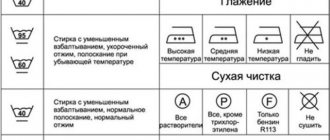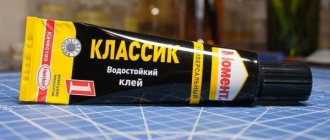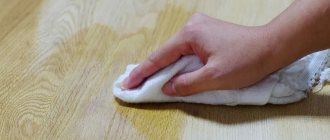Having fashionable, cozy, stylish winter outerwear can be overshadowed by the fact that your down jacket is leaking lint. This type of clothing is considered the most expensive and at the same time comfortable, because the natural down filling allows the body to breathe, retains heat and does not restrict movement. If fluff comes out of a down jacket immediately after purchase or short use, it is important to determine the cause of this phenomenon and try to eliminate it on your own or with the help of professionals.
Down jacket comes out with fluff inside and outside
The fact that fluff is coming out of your jacket cannot be ignored, because the clothes you wear to work or school are covered with a scattering of white fluff or lumps, and sometimes even whole feathers. Spending time on cleaning things every day is not entirely convenient, so it’s worth looking for the causes of such shedding and eliminating them.
Have you encountered such a problem?
Not really
There are several explanations why down comes out of a down jacket:
- Poor quality lining. Usually, when creating outerwear, a double lining or thickened fabric with an adhesive base is used, which, even after washing, does not become thinner and continues to hold even thin fibers. Sometimes manufacturers save money and hem the jacket with a single layer of fabric that changes density during use and washing. With such a defect, fluff comes out of the jacket from the inside.
- Poor quality insulating layer separating the top from the chambers with filler. Normally, it is sheathed on the outside, adjacent to the fabric of the top, with dense soft fabric such as twill or satin with an adhesive base. The absence of such an additional layer leads to the penetration of fuzz onto the front part of the clothing.
- Incorrectly made seams. This could be poor quality suture materials (threads break or stretch during wear) or a violation of stitching technology (lack of bias tape, too large a stitch, etc.). This marriage occurs when down comes out of the down jacket at the seams.
- Improper use and care of clothing. Too high a temperature when washing, spinning at maximum speed, knocking the filler into lumps and attempts to “break” them manually can lead to rupture of the chambers, broken seams, and stretching of the lining fabric threads. All this leads to the appearance of fuzz inside and outside the clothes during wear.
Proper washing will not only prevent the appearance of fluff (provided that the product is of high quality), but also get rid of the smell of sweat and cigarettes.
For the reasons described above, many people have padding polyester coming out of their jackets. Despite a completely different shape and texture, this material, just like natural fluff, requires high-quality insulation. Violation of the technology of sewing a product or caring for it can lead to inconvenience in the form of white lumps on the lining or front side of an insulated coat.
Reasons for fluff coming out
One of the reasons for the appearance of fluff on a product is poorly sewn seams. When sewing the product, technology was violated; a thin thread was used, which becomes thinner and stretches over time. As a result, fluff comes out through the cracks formed. If you notice down on the inner lining of the product, then you purchased a down jacket with a single lining instead of the required double lining .
Or the manufacturer used too thin fabric for the lining, which thins even more when the product is worn and washed. In addition, one of the reasons is improper care of the fabric. Most consumers, without looking at the label, wash their down jacket in the machine, without using the “delicate wash” mode. Over time, the product becomes unusable, the down begins to roll off, the seams stretch, and fluff appears on the lining and front side of the down jacket.
Marriage or not marriage?
Before looking for ways to correct a defect, it is important to understand whether it is a manufacturing defect. If this is the case, you can return the item to the seller for a replacement or ask for a refund.
Good to know! Each manufacturer provides a guarantee for its products for a certain period: some for one season, others for 10 years from the date of purchase or the onset of the season for which the product is intended. If you lose lint from your down jacket before the warranty expires, you can return it to the store with your receipt. The seller is obliged to replace it with another or reimburse its cost no later than 10 days from the date of the buyer’s request. (PZPP Art. 18, Art. 19, Art. 20).
You can understand that this is a defect and not an improper exploitation by two signs:
- the filler was useful immediately after purchase or before the clothes began to be used for their intended purpose;
- fluff appeared on the surface and lining during use, but before it was dry cleaned or washed independently.
In other cases, we are most likely talking about improper care of the clothes, so you should not hope for compensation, but look for a way to treat the jacket to prevent fluff from creeping in, or a way to thicken the lining.
Can this be called marriage?
If fluff has passed through the fibers of the material even before use, we can say that the product is defective. This means that low-quality materials were used in production. Outwardly, such down jackets look attractive, but lint may appear even during the first try-on. You can purchase similar wardrobe items at open markets and markets.
Defects in the form of fluff appearing are not always immediately visible. Lint comes out at the initial stage of use of the product, often before the first wash. Other cases are only a consequence of improper care.
How to fix the problem
There are active and passive ways to eliminate escaping outerwear filling. The first includes treating the back and front of the down jacket with special means: antistatic agent, hairspray or glue. Such measures are effective for a short time, so you will have to repeat them daily or every 1-2 weeks.
The latter involve a radical replacement of the lining, strengthening the seams, or sewing an additional layer to the underside that holds the filler inside. They are more labor-intensive and expensive, but they allow you to forget forever about the problem of insulation escaping to the surface. Next, each method will be discussed in detail.
Helpful advice! Sometimes, to stop shedding, it is enough to vacuum the down jacket from the inside out and leave it to rest for several days. During this time, the filler will finally settle and much less will come out.
Antistatic treatment
Before you treat the down jacket to keep the fluff out , you can make sure that the problem is with static voltage: just rub it from the inside with a plastic comb, and fluff will appear on the surface of the material. This marriage is typical for clothes with a synthetic lining. To get rid of the defect, you will have to spray an antistatic agent on it before each exit so that it evenly moistens the underside. The result is that the material will be less magnetized and attract fluff from the chambers.
Advantages of the method: speed of execution, affordability.
Disadvantages of the method: short-term effect.
Seal the lining with hairspray
The second most popular way to treat a down jacket to prevent fluff from coming out from the inside is regular hairspray. The method is suitable for eliminating defects on clothes with low-quality, very loose lining. The resinous substances of the varnish will retain the fuzz on the surface of the material, but will not reduce their loss. The product is sprayed over the entire inside until it is wetted, then the clothes are dried. Treatment should be carried out 2-3 times a week.
Advantages of the method: low cost, speed, problem elimination in 2-3 days.
Disadvantages of this method: the material can become sticky, rougher, and over time the fabric deteriorates.
Water repellent for shoes
A shoe treatment with a water-repellent effect is a good option for treating a jacket to prevent fluff from creeping in from the outside. To do this, it is better to take a spray rather than wax or paste. It is sprayed over the entire surface of the material from a distance of 20-30 cm, trying not to leave dry places. Then the clothes are left to fix the impregnation for 1-2 hours.
Advantages of the method: quick elimination of defects, imparting water-repellent properties to the coating.
Disadvantages of this method: changes in the appearance of clothing (color, fabric texture), loss of filler along the seams and decorative stitches.
Washing with glue
The method is suitable if the insulation comes from the inside and front side. Washing with PVA glue will help secure it inside the lining until next time. To do this, you need to dissolve 1 part of glue in 30 parts of warm water and immerse the jacket in the solution. You can knead it a little so that the liquid better saturates the filler. After 1-2 hours, it is gently squeezed out and dried flat.
Advantages of the method: long-term effect, low cost.
Disadvantages of this method: deterioration of the thermal insulation properties of the filler, loss of volume, high risk of stains or streaks.
Down is coming out of the inside of the down jacket
Most often, fluff begins to creep out of things either immediately after purchase, or after dry cleaning or machine washing. In the first case, you need to return the item to the store without thinking. The whole point is that the coat or jacket has a defect in the lining or poor-quality filling. And this can already be considered a marriage. Why should we suffer because of someone else's mistake?
If problems with clothes appear after dry cleaning, then you need to file a claim with its employees. Typically, in such cases, clients receive compensation.
Sooner or later, the down jacket will delight its owner with such a problem - down is creeping out from inside the product. The easiest way to deal with this problem is to change the lining in the studio. In terms of money, it will be much cheaper than buying a new thing.
Some owners of such problematic down jackets treat the seams of the product with a certain adhesive. As a rule, these experiments do more harm and end unsuccessfully.
You can also replace the lining yourself. In order not to quit halfway, you need to be confident in your own abilities. If this problem constantly occurs, we can conclude that the quality of the product is not very good. There is a possibility that due to the constant loss of filler, the heat-saving properties of clothing have already been lost. It's worth thinking about buying a new down jacket.
Lining update
If there is a goal to radically correct a defect or error in care, it is worth preparing for the most labor-intensive process - updating the lining. If you see fluff coming out of your down jacket, you will have to do one of two procedures:
- Hem an additional layer of dense, smooth material.
- Completely replace the underside, peeling it off and updating the outer and inner layers of the “cassette”.
The choice of method depends on several factors. So, creating an additional inner layer is suitable if the filler comes out from the inside. If down or synthetic padding comes out of the jacket from the outside, you will have to completely replace the inner filling of the clothing.
How to make an extra layer of lining
First you need to choose a suitable material: dense, smooth, preferably with a silky front side. Percale with double weave threads and teak would be ideal. They are usually used for sewing pillowcases, mattress covers, etc. Alternatively, you can use fleece. You will also need adhesive fabric.
How to make an additional layer:
- Cut out the details of the additional layer. To do this, turn the jacket inside out and draw the contours of the sleeves, fronts, and back on the fabric. Make them 2-3 cm larger on each side.
- Sew the seams on the sleeves, then make the side seams on the front and back. Lastly, sew in the sleeves and close the shoulder seams.
- Use adhesive fabric to strengthen the seams on the sides and sleeves, as well as the contours of the lining, where the seams connecting it to the jacket will be located.
- Sew an additional layer in a circle, starting from the neckline, then sew the sleeves on the cuffs, pinpoint the shoulder seams. Lastly, sew the seams on the shelves (next to the fasteners), and only then close the seam along the bottom of the product.
If you can see from the inside and outside that fluff is coming out of the down jacket, you will have to do a more labor-intensive complete replacement of the inside out. To do this, you also need to stock up on lining material and an adhesive with a non-woven base.
Algorithm for performing the operation:
- Remove old lining. Tear it away from the jacket, separate the sleeves, cuffs, and other small parts. The filler is removed and placed temporarily in the bag. Clean the ripped parts from any remaining fluff, unfold and iron.
- Cut out a new one. Cut out new ones along the contours of the ripped parts. Each part should have 4 pieces: 2 of lining fabric, and 2 of adhesive fabric.
- Strengthen and seal the lining with adhesive fabric. Combine and iron the parts, and then sew them in pairs with an adhesive layer inside, leaving a seam no more than 1 cm wide.
- Fill the resulting “cassettes” with filler. It is better to do this gradually: fill the upper quarter, for example, sleeves, make a horizontal stitch, fill the second quarter, stitch again, and so on until the very bottom. This technology will help prevent fluff from rolling down during wear.
- Sew the resulting parts. If necessary, cover the side seams with bias tape or tape made of lining material reinforced with adhesive fabric. This will prevent fluff from spilling out along the seams.
Finally, sew the new lining into the jacket. First sew on the cuffs and neckline, then use ribbons or straight seams to secure the shoulder part, and then sew on the fronts. The final step is to sew the wrong side down.
What can I do to prevent this?
When wearing down products, it is very important to take proper care of them:
- wear a down jacket carefully;
- wash at a certain temperature;
- do not soak the product before washing;
- dry in a horizontal position;
- do not use chemical washing or steam treatment;
- In summer, store in a special cotton bag.
How to wash?
Most down jackets can be machine washed, but you need to be smart about the process. First, you need to choose the right washing mode: “delicate wash” or “down.” Other modes are not intended for washing down products. Secondly, instead of hard washing powder, you need to use a liquid laundry detergent that will not damage the fabric. Thirdly, use a gentle spin mode at low speeds. When washing by hand, it is not recommended to soak the down jacket for a long time . In addition, the seams and fabric may be damaged if you clean them with a hard brush.
How to dry?
You cannot dry a down jacket on a hanger or on a clothesline. Down and feather products should be dried in a horizontal position. Carefully lay the product on a large terry towel. Straighten out the sleeves and all folds. With such drying, the fluff will not crumple, but will be evenly distributed throughout the entire product. After the down jacket has dried, shake it well and only then put it on.
If the filler is padding polyester
The procedures described in the previous sections are relevant for cases where padding polyester comes out of the jacket - what to do in a specific situation can be decided based on the characteristics of the defect in the outerwear:
- reinforce a poor-quality lining with an additional layer of fabric or replace it completely;
- spilling of filler along the side seams should be eliminated by strengthening them and applying additional stitches;
- if synthetic fibers are coming out from the outside and inside, replace the insulation completely.
Expert opinion
Vasily Kopyrin
Expert of the Cleaning Project, trained as an auto mechanic, owner of a small business (low-rise construction)
Ask a Question
A down jacket for me is the best type of outerwear, light and warm at the same time. I like that wearing a down jacket in winter means it’s not cold outside and not hot in the subway and ground transport. BUT - if the down jacket is natural, at least with the cheapest duck down. Or with a good modern padding polyester. Otherwise, the down jacket becomes a disaster. In my opinion, if a down jacket is really good, then you need to fight for it - see the measures above. If it is a cheap product (sometimes it is cheap not in price, but only in quality, i.e. you bought something expensive, but complete nonsense), then it is better to use temporary measures - hairspray, antistatic agent, removing loose fibers with a roller or vacuum cleaner.
Author: Anastasia Vitkova
(Visited 3,064 times, 3,064 visits today)
Share
Is this a marriage?
Yes, the fluff coming out of the jacket may well be a defect. If fluff appears not in the seams, but on top of the material, it means that the manufacturer used low-quality fabric to sew the product. But you can prove the defect only if you noticed fluff immediately after purchase, that is, the product was not washed, steamed or dry cleaned. Then you can return the product to the store or order an independent examination to evaluate the defect.
How to determine before purchasing that the seams are of poor quality?
Carefully inspect the seams before purchasing the product . If you see that threads are sticking out of them, cracks are visible between the seams, from which feathers are already visible, you have a low-quality item. Take the product in your hands and shake it thoroughly to see what happens to the fluff. In addition, the quality of the threads can be determined by touch. The stronger and more elastic the thread, the greater the likelihood that the down jacket is stitched properly.
What to wear with a long vest?
How long should women's trousers be?
Prevention measures
To prevent the filling from coming out of the jacket, you should follow simple tips that will protect the product:
- Expose your clothes to washing or cleaning the outside as little as possible; to do this, wear your down jacket carefully.
- For long-term storage, store the product in a closet in bags specially designed for clothing. Do not fold or wrinkle the jacket, use a hanger.
- Read the care label for the item after purchasing it and follow the manufacturer's recommendations.
- Do not wash winter clothes at home, use the services of specialists.
Try to buy outerwear in stores that provide a quality guarantee on goods, this way you will avoid unnecessary financial and time costs for replacing a down jacket.
How and why to take care of things
You should always take good care of your belongings:
- pay attention to their condition;
- at the first sign of problems, solve them immediately;
- have them professionally cleaned;
- Do not spare money on special means for caring for things.
All these procedures must be performed so that the clothes retain their original appearance for as long as possible. If you simply hang things in the closet, without paying attention to their condition and appearance, then very soon they will become unusable.
Wardrobe items, like people, can “grow old” prematurely. And the next shopping trip will cost much more than regular care for already purchased clothes.
How to change the lining
You can try to replace the lining yourself only if you have a clear understanding of what you are doing and confidence in your own abilities. It is quite difficult to do this yourself, but it is possible:
- the first step is to trim the threads that hold the lining fabric;
- the lining should be removed, and all the fluff contained inside should be collected in a bag (this must be done very carefully, since the fluff is very light and will fly apart at the slightest breath of wind);
- separate the entire lining into separate parts;
- each detail must be traced on the fabric, leaving seam allowances of 1 cm;
- the new lining must be sewn back on, starting from the sleeves, gradually filling the jacket with down.
Additionally, you can add feathers from an old pillow, they are suitable for this use, so the jacket will become even warmer. The main thing in this matter is not to overdo it.
In words, everything, of course, looks simple, but in reality it is hard work. Therefore, if you have never done anything like this, it is better to entrust the matter to a professional seamstress.
Special processing of down jackets
To combat this problem, we must not forget about traditional methods. Sometimes they are very effective and efficient. But remember that no one is immune from unexpected consequences.
Option 1
There is a simple option in which all seams are treated with ordinary varnish. This method has its own characteristics:
- The varnish is sprayed onto the seams or applied in a thin layer.
- The seam is strengthened through non-contact intervention.
- Fabrics that have been treated remain sticky for a long time.
- This method does not help in all cases.
According to reviews from those who have already encountered this problem, the use of varnish is an easy-to-use and at the same time effective way to stop fluff from falling out of clothes. But there are also negative aspects - the down jacket will stand up, there is no other way to call it if more varnish is applied than normal.
Option 2
In this method we will use glue. You must proceed as follows:
- You will need 200 grams of PVA glue.
- Take 6 liters of water and dilute glue in it.
- Soak the down jacket in the resulting solution for 1 hour.
- We rinse the product by hand at least 4 times.
Theoretically, nothing will happen to the down, but the appearance of the down jacket will definitely deteriorate. The fluff in the product will form clumps and will never again be distributed over the entire area of the product. The thermal properties of the down jacket will be lost; in winter it will no longer be able to fully warm you.
It is impossible to find in nature any means that could strengthen the seams for a long time and completely stop the loss of fluff. Glue and varnish improve the situation only for a while. Most likely, the clothes will already lose their attractiveness. Therefore, such measures should only be used in extreme cases.











